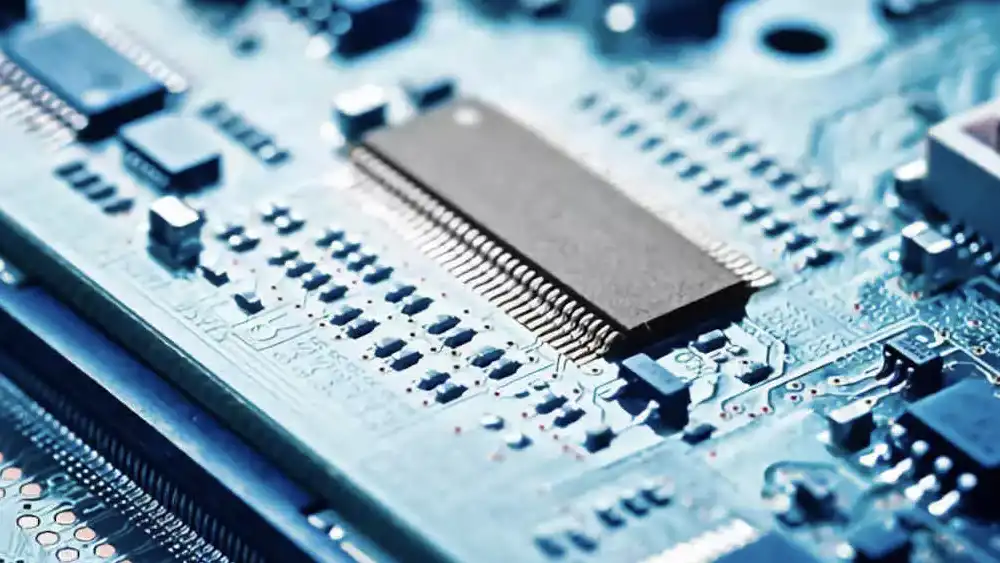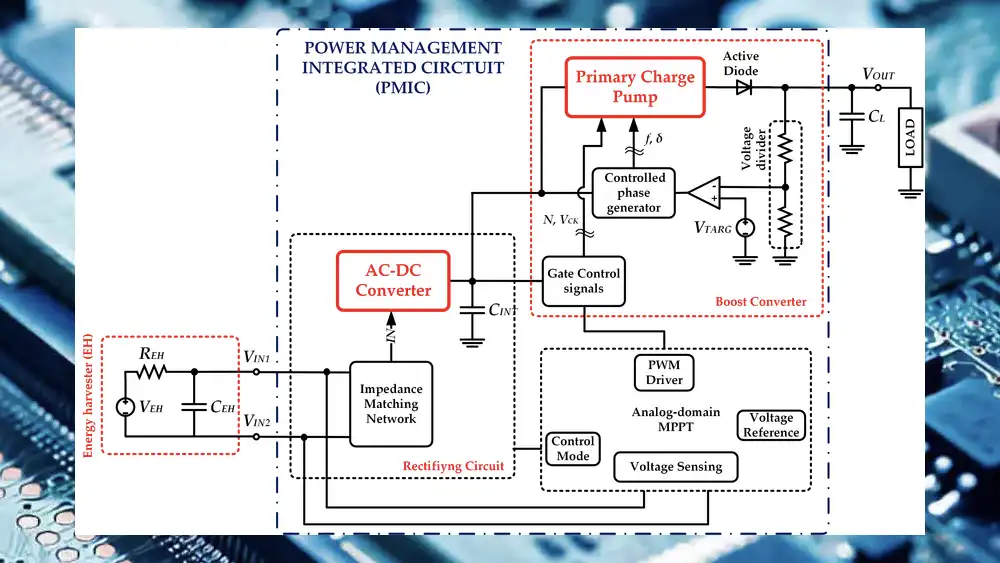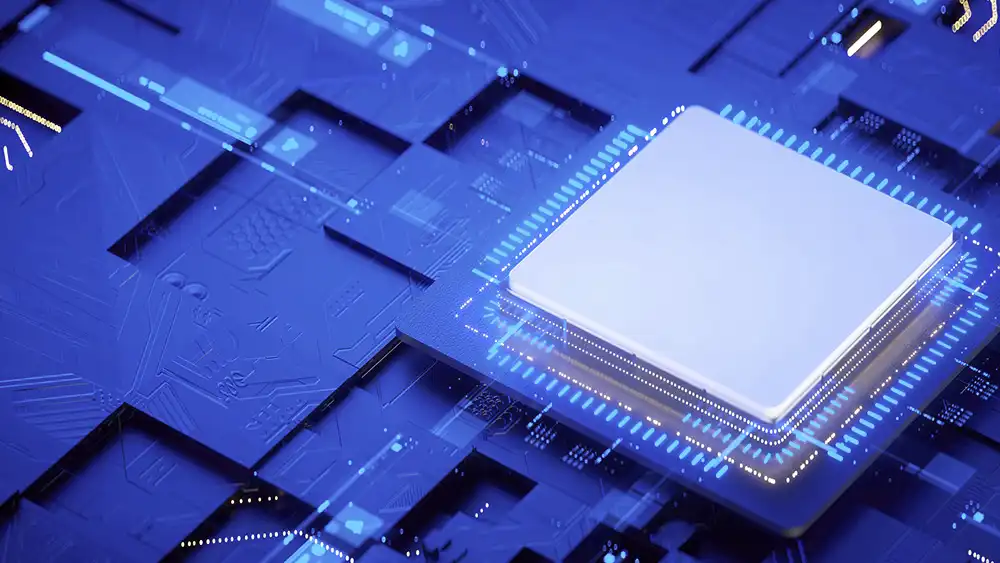What Is Power Management Integrated Circuit

A Power Management Integrated Circuit (PMIC) is a specialized semiconductor chip designed to manage the power requirements of various electronic systems.
It regulates the distribution and control of electrical power in devices, ensuring efficient energy use and stability. PMICs are integral components in numerous modern electronics, including smartphones, laptops, and automotive systems.
Importance of Power Management in Modern Electronics

In today’s technology-driven world, efficient power management is critical. With the proliferation of portable and battery-operated devices, there is an increasing need for components that can optimize power usage, extend battery life, and enhance overall device performance.
PMICs play a crucial role in addressing these needs by integrating various power management functions into a single chip, reducing the need for multiple discrete components.
Evolution of PMIC Technology
The evolution of PMIC technology has been marked by significant advancements in miniaturization, integration, and functionality.
Early power management solutions relied on discrete components, which were bulky and inefficient. Modern PMICs, however, offer highly integrated solutions with sophisticated control mechanisms, enabling more compact and efficient designs. Innovations such as advanced power-saving modes and smart power management features have further propelled the development of PMICs.
Technical Specifications of PMIC

Basic Structure of PMIC
A typical PMIC consists of multiple power regulators, controllers, and monitoring circuits integrated onto a single chip. These components work together to manage the power flow, ensure voltage stability, and protect against power-related issues such as overvoltage, undervoltage, and thermal overloads.
Key Components and Functions
- Voltage Regulators: Regulate and stabilize the output voltage.
- DC-DC Converters: Convert direct current (DC) from one voltage level to another.
- LDO Regulators: Provide low-dropout voltage regulation for efficient power distribution.
- Battery Management Units (BMU): Monitor and manage battery charging and discharging.
- Power Switches: Control the distribution of power to various components.
- Supervisors and Monitors: Ensure system stability and safety by monitoring voltage levels and temperature.
Electrical Characteristics
PMICs are characterized by their input and output voltage ranges, efficiency ratings, power output capabilities, and thermal performance. These parameters vary depending on the specific application and requirements of the device they are used in.
Integration with Other Circuits
PMICs are designed to seamlessly integrate with other electronic circuits and components. This integration involves matching electrical characteristics and ensuring compatibility with various communication protocols and control interfaces.
Power Management Integrated Circuit Analysis and Design

Power Management Integrated Circuits (PMICs) are specialized electronic components designed to manage the power requirements of a device or system. They play a crucial role in converting, regulating, and distributing power efficiently to various parts of a system, ensuring optimal performance and battery life. The analysis and design of PMICs involve several key aspects, including understanding the system requirements, designing efficient power conversion circuits, ensuring reliability, and minimizing power loss. Here’s a more detailed overview:
Key Functions of PMICs
- Voltage Regulation: Maintaining a stable output voltage despite variations in input voltage or load conditions. This includes:
- Linear Regulators (LDOs): Simple and low-noise but less efficient for large voltage differences.
- Switching Regulators: Include buck (step-down), boost (step-up), and buck-boost converters, offering higher efficiency through switching mechanisms.
- Power Sequencing and Distribution: Ensuring power is supplied to different components in a specific order and managing the distribution of power across multiple loads.
- Battery Management: Handling charging and discharging cycles, battery protection, and state-of-charge monitoring. This is critical in portable devices to maximize battery lifespan and safety.
- Protection Features: Safeguarding the system against over-voltage, under-voltage, over-current, short circuits, and thermal events.
- Power Monitoring: Providing real-time monitoring of power consumption, voltage levels, and temperatures to optimize power usage.
Analysis and Design Considerations
1. System Requirements Analysis
- Load Requirements: Determine the power needs of each component, including current, voltage, and power consumption.
- Power Sources: Identify available power sources (e.g., battery, USB, mains power) and their characteristics.
- Efficiency Goals: Set efficiency targets to minimize power loss and heat generation.
2. Topology Selection
- Linear vs. Switching Regulators: Choose based on efficiency, noise requirements, and complexity.
- Buck, Boost, or Buck-Boost: Select the appropriate topology for step-down, step-up, or both functions.
3. Circuit Design
- Component Selection: Choose inductors, capacitors, and switching elements (e.g., MOSFETs) based on current, voltage ratings, and efficiency.
- Control Strategies: Implement control methods like Pulse Width Modulation (PWM) for switching regulators to maintain stable output.
4. Simulation and Modeling
- Use software tools (e.g., SPICE, MATLAB) to simulate circuit behavior under different conditions and verify performance against specifications.
- Model thermal behavior to ensure components operate within safe temperature ranges.
5. PCB Layout
- Design the printed circuit board (PCB) to minimize electromagnetic interference (EMI), optimize thermal dissipation, and ensure robust power and ground planes.
- Pay attention to component placement, trace widths, and routing to reduce losses and noise.
6. Prototyping and Testing
- Build and test prototypes to validate design performance, checking parameters like efficiency, load regulation, line regulation, and transient response.
- Perform stress tests to evaluate reliability and robustness under extreme conditions.
7. Power Management Software
- Develop firmware to manage power states, including dynamic voltage and frequency scaling (DVFS), sleep modes, and power-on sequencing.
Advanced Topics
- Energy Harvesting: Integrating methods to capture and convert ambient energy (e.g., solar, thermal, vibrational) for powering devices.
- Smart Grids and IoT: Designing PMICs for smart grids and IoT applications, focusing on low-power operation and networked energy management.
- Multi-Phase Regulation: Using multiple parallel regulators to manage high-current loads more efficiently, distributing heat and improving response times.
Applications of PMIC
Consumer Electronics
PMICs are ubiquitous in consumer electronics, providing efficient power management for smartphones, tablets, laptops, and wearable devices. They help extend battery life and ensure reliable operation under various conditions.
Automotive Industry
In the automotive sector, PMICs manage the power requirements of infotainment systems, advanced driver-assistance systems (ADAS), and electric vehicles (EVs). They play a crucial role in improving the energy efficiency and reliability of automotive electronics.
Industrial Applications
Industrial applications of PMICs include factory automation, robotics, and energy management systems. These circuits help optimize power usage, enhance system stability, and reduce operational costs in industrial settings.
Medical Devices
PMICs are essential in medical devices, where reliable and efficient power management is critical for patient safety and device performance. Applications include portable diagnostic equipment, implantable devices, and wearable health monitors.
Benefits of Using PMIC
Improved Energy Efficiency
PMICs enhance energy efficiency by optimizing power distribution and reducing energy losses. This leads to lower power consumption and extended battery life in portable devices.
Extended Battery Life
By efficiently managing the charging and discharging cycles of batteries, PMICs help prolong battery life and improve the overall reliability of battery-operated devices.
Enhanced Performance
PMICs contribute to enhanced device performance by ensuring stable and reliable power supply, which is essential for the optimal functioning of various electronic components.
Reduced System Complexity
Integrating multiple power management functions into a single PMIC reduces the need for discrete components, simplifying the overall system design and reducing the physical space required on printed circuit boards (PCBs).
Power Management Integrated Circuits Market
The Power Management Integrated Circuits (PMICs) market is a vital and growing segment of the semiconductor industry, driven by the increasing demand for energy-efficient and compact power solutions in various electronic devices and systems. PMICs are essential in managing the power requirements of consumer electronics, automotive systems, industrial applications, and more. Here is an overview of the PMIC market:
Market Drivers
- Consumer Electronics: The proliferation of smartphones, tablets, laptops, wearables, and other portable devices has significantly boosted the demand for efficient power management solutions. PMICs help extend battery life and improve device performance.
- Automotive Industry: The shift towards electric vehicles (EVs) and the increasing adoption of advanced driver-assistance systems (ADAS) and infotainment systems are driving the need for sophisticated power management. PMICs are crucial for battery management systems (BMS), in-car chargers, and various electronic control units (ECUs).
- Industrial Applications: The rise of automation, industrial IoT, and smart manufacturing requires reliable and efficient power management. PMICs ensure stable operation of industrial equipment and reduce energy consumption.
- Renewable Energy: The growing emphasis on renewable energy sources, such as solar and wind, necessitates efficient power conversion and management solutions. PMICs play a key role in optimizing the performance of renewable energy systems.
- 5G Technology: The deployment of 5G networks requires advanced PMICs to manage the power requirements of 5G base stations, small cells, and related infrastructure.
Market Trends
- Miniaturization and Integration: There is a trend towards more compact and integrated PMICs that combine multiple functions into a single chip. This reduces the overall size and cost of electronic devices.
- Energy Efficiency: With increasing regulatory pressures and consumer demand for greener products, PMICs are being designed to deliver higher energy efficiency, reducing power losses and extending battery life.
- Advanced Packaging Technologies: Innovations in packaging technologies, such as system-in-package (SiP) and wafer-level packaging (WLP), are enhancing the performance and reliability of PMICs.
- AI and IoT Integration: The integration of artificial intelligence (AI) and IoT capabilities into PMICs allows for smarter and more adaptive power management solutions. These PMICs can dynamically adjust power usage based on real-time data and conditions.
- Customization and Flexibility: There is a growing demand for customizable PMICs that can be tailored to specific application requirements, providing flexibility to designers and manufacturers.
Market Segmentation
By Product Type:
- Voltage Regulators
- Battery Management ICs
- Power Supply ICs
- LED Drivers
- Others (e.g., Supervisors, Power Factor Correction ICs)
By Application:
- Consumer Electronics
- Automotive
- Industrial
- Telecommunications
- Healthcare
- Others (e.g., Aerospace, Defense)
By Region:
- North America
- Europe
- Asia-Pacific
- Latin America
- Middle East & Africa
Key Players
Several major companies dominate the PMIC market, leveraging their extensive R&D capabilities and broad product portfolios. Some of the key players include:
- Texas Instruments Inc.
- Analog Devices, Inc.
- ON Semiconductor Corporation
- Infineon Technologies AG
- STMicroelectronics N.V.
- Maxim Integrated Products, Inc.
- Renesas Electronics Corporation
- Qualcomm Incorporated
- NXP Semiconductors N.V.
- Rohm Semiconductor
Market Outlook
The PMIC market is expected to grow significantly over the next decade, driven by advancements in technology and increasing demand across various sectors. According to market research reports, the global PMIC market size was valued at several billion dollars in recent years and is projected to achieve a compound annual growth rate (CAGR) in the high single digits to low double digits.
Conclusion
Recap of PMIC Benefits and Applications
PMICs offer numerous benefits, including improved energy efficiency, extended battery life, enhanced performance, and reduced system complexity. They are essential components in a wide range of applications, from consumer electronics to automotive and industrial systems.
Future Implications for Technology and Industry
The continued advancement of PMIC technology will drive innovation in various industries, enabling the development of more energy-efficient and reliable electronic devices. As the demand for compact and efficient power management solutions grows, PMICs will play an increasingly important role in shaping the future of technology.




















